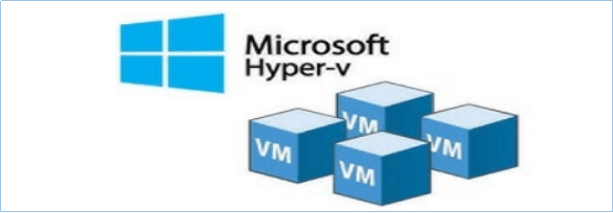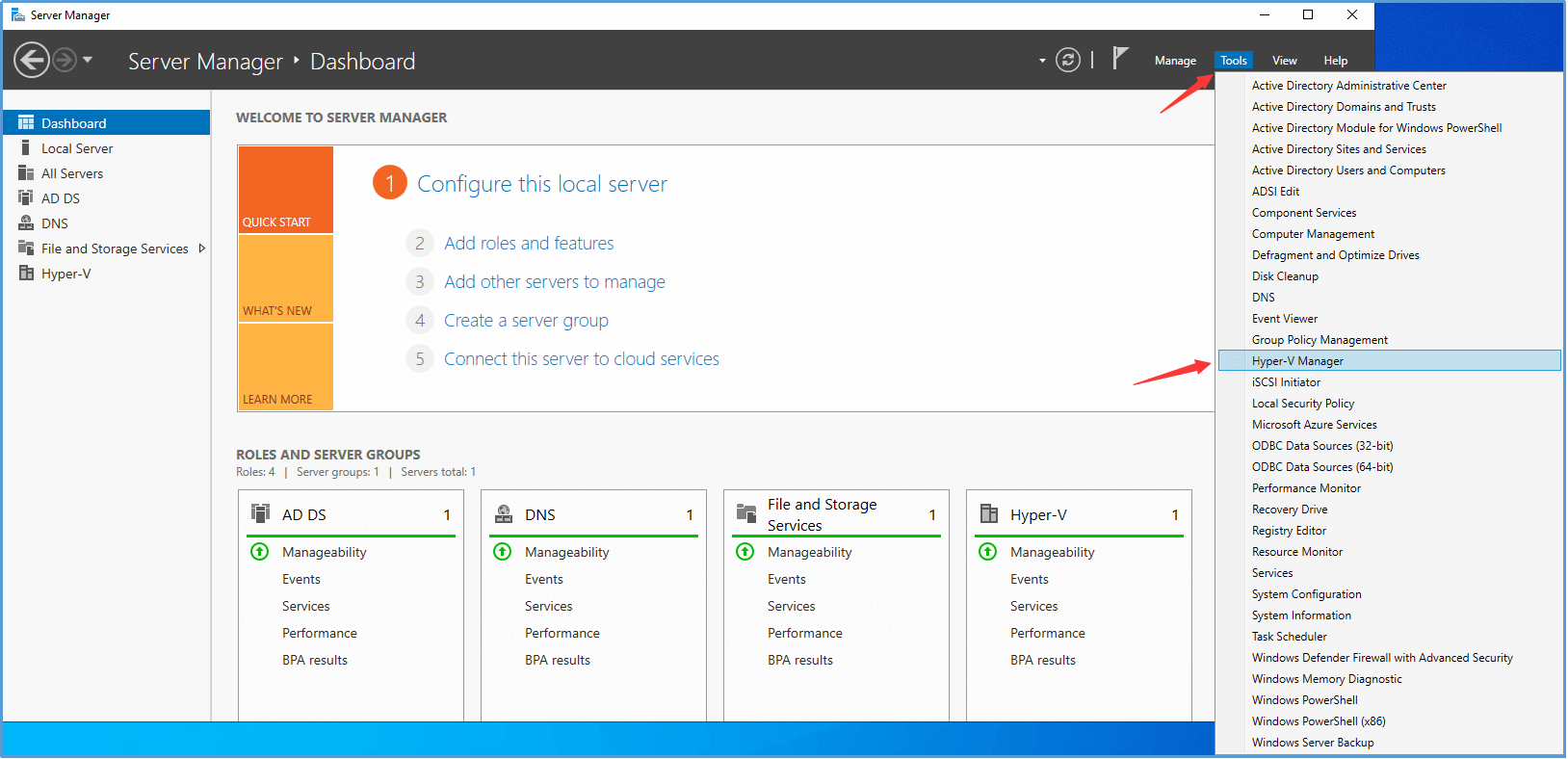How to Clone Hyper-V Virtual Machine
Gap updated on Sep 14, 2024 to Todo Backup Guide | How-to Articles
Are you looking for a straightforward way to clone a Hyper-V virtual machine? This article will guide you through the process with detailed step-by-step instructions. Here are the two convenient options: using Hyper-V Manager or utilizing the user-friendly tool, EaseUS Todo Backup Enterprise.
Nowadays, Hyper-V has emerged as a widely adopted server virtualization solution for businesses. It enables the operation of multiple virtual operating systems on a single physical computer, serving purposes such as testing and business applications. The need for a cloned virtual machine occasionally arises in the routine use of Hyper-V. This article aims to outline the significance of cloning a virtual machine in Hyper-V and provides guidance on accomplishing this task using either Hyper-V Manager or a third-party tool known as EaseUS Todo Backup Enterprise.

1. Cloning a virtual machine permits you to generate exact replicas of an existing VM, which can be utilized for testing novel software, configurations, or updates without affecting the original VM.
2. Cloning a virtual machine in Hyper-V eliminates the need to configure and install applications on each individual virtual machine. This time-saving process allows for the efficient deployment of the same application and resources to multiple virtual machines.
3. The virtual machine copy that is created can swiftly restore the previous configuration of the virtual machine in case of system failure, data loss, or other unforeseen events.
4. Cloning a virtual machine enables you to establish isolated environments tailored to specific tasks or projects, effectively ensuring the security and integrity of the original VM.
The Hyper-V Manager serves as the graphical user interface (GUI) for managing Hyper-V Virtual Machines (VM). Although there are no direct options for cloning VMs, there is a workaround available. You can achieve VM cloning by exporting the VM from one host and importing it to another.
Here is a step-by-step guide on how to clone a virtual machine in Hyper-V Manager:
1. To begin, launch the Hyper-V Manager on the Server Manager.

2. Once the Hyper-V Manager is open, locate the virtual machine you want to clone in the Virtual Machines list. Then right-click on the Virtual Machine and select Export.
3. Browse to a location where you want to save the export files and click Export. This will create a copy of the virtual machine.
4. After completing the export process, right-click on the Hyper-V Manager node in the left-hand pane and select Import Virtual Machine. In the Import Virtual Machine wizard, specify the location of the exported virtual machine files and click Next.
5. Once selecting the virtual machine you want to import, you will be prompted to choose the Import Type and click Next.
6. Choose desired location where you want to store the imported virtual machine files, and then click Next.
7. Review the import settings and click Finish to start the import process. Once the import is completed, you will have a cloned virtual machine in Hyper-V.
EaseUS Todo Backup Enterprise is a proficient, dependable, and user-friendly solution that is helpful in cloning Hyper-V virtual machines. It is an ideal choice for businesses and enterprise environments due to its professional features and reliability.
Once you have downloaded and installed EaseUS Todo Backup Enterprise on your virtual machine, refer to the steps below to clone the virtual machine:
1. Launch EaseUS Todo Backup Enterprise on your virtual machine and click on the New Task option in the main interface to choose System Backup to make a copy for the source virtual machine.
2. Click Browse... to choose the destination for storing the backup image.
3. To obtain a bootable disk, select the Create Emergency Disk option.
4. Next, navigate to the Hyper-V settings on the newly created Hyper-V machine, and opt to boot the Hyper-V virtual machine from the bootable ISO image.
5. Once the bootable media has been loaded correctly, choose the System Transfer option and find the backup image you had previously stored in the Browse to Recover window. Then, click on OK.
6. Choose the desired target drive to restore the system backup to, and then click Proceed to start the process. Once the restoration process is successfully finished, the new Hyper V machine would be exactly the same as the old one.
Cloning Hyper-V virtual machines is a valuable feature that can greatly save time and effort when creating multiple VMs with similar configurations. Compared to other cloning solutions, EaseUS Todo Backup stands out as a dependable and user-friendly software solution for creating exact copies of Hyper-V virtual machines, even on different hardware. It not only helps in cloning Hyper-V VMs but also offers comprehensive protection for the virtual environment.
1. Can I clone Hyper-V Virtual Machine?
Yes, you can. You have the option to clone a virtual machine in Hyper-V Manager or use a third-party tool for this purpose. One such tool is EaseUS Todo Backup Enterprise.
2. Why would I want to clone a Hyper-V virtual machine?
Cloning a Hyper-V virtual machine enables you to create an exact duplicate of an existing VM. This proves beneficial for diverse objectives like generating backup copies, establishing test environments, or swiftly deploying multiple VMs with identical configurations.
3. Can I clone a running Hyper-V virtual machine?
It is generally advisable to pause or shut down the virtual machine before cloning it to maintain data consistency. However, EaseUS Todo Backup provides the capability to clone a running VM, keeping in mind certain considerations and limitations.
4. How long does it take to clone a Hyper-V virtual machine?
The duration for cloning a Hyper-V virtual machine is contingent upon multiple factors, including the VM's size, the host machine's performance, and the selected cloning method.
Related Articles
Windows Server Backup Incremental (Available on Windows Server 2012/2016/2019)
How to Backup VMware Virtual Machine
How to Backup with WinPE Bootable Disk
Is OneDrive Secure for Business